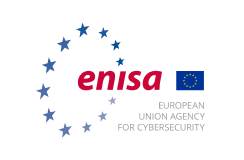‘Nigeria-letters’. EU Agency ENISA launches ‘Social Engineering’ -report with 5 defence advice to counter fraud threat
The EU Agency ENISA (The European Network and Information Security Agency) launches a white paper on ‘Social Engineering’, (i.e. on-line manipulation, through social networks, email, also known as ‘Nigeria-letters’ or ‘advance-fee frauds’, instant messaging, or Voice Over Internet Protocols (VoIP). The Agency provides 3 case studies portraying how easy users are manipulated, identifies 5 defence measures and issues a check list, ‘LIST’, for users to counter social engineering. Finally, the Whitepaper includes an exclusive interview with the world famous security author, speaker, and consultant Kevin Mitnick.
What are the risks of on-line manipulation, or “Social Engineering”? Fraudsters frequently manipulate people and exploit human weaknesses through ‘social engineering’. That way, people break their normal security procedures. The scale and sophistication of such fraud is increasing, (27.649/month, Jan.’07-Jan ‘08, according to APWG). Several new ways are used to reach users (e.g. instant messaging, VoIP, and social networking sites apart from emails). Successful social engineering entails:
Three e-mail based case studies portray how easy it is to trick ordinary users:
- Case 1: 179 respondents assessed 20 messages (11 bogus, and 9 legitimate), and only 42% of the users could correctly classify the mails; (32% were classified incorrectly and 26% as ‘do not know’.)
- Case 2: Of 152 targeted end-users within an organisation, 23% were tricked into accepting malware infections.
- Case 3: Over 500 undergraduate students followed embedded links, opened attachments, etc. The rate of failure was 38-50%. The good news is that the failure rate was reduced with training.
The Agency identified 5 defence measures against social engineering. However, the key to success lies in improving users’ awareness. Users should use a checklist of questions to verify the Legitimacy, Importance of the Information, the Source and Timing (LIST) (for full checklist see p 25-26 of the report.) Mr Mitnick underpins the report with the claim that it is much easier to trick someone into revealing their password, rather than making an elaborate hack.
The Agency commented:
“Making staff and users aware of security is of serious concern for Europe. We should all become more aware and ‘responsible on-line EU-citizens’, in our own interest of being able to benefit of the Internet safely”
